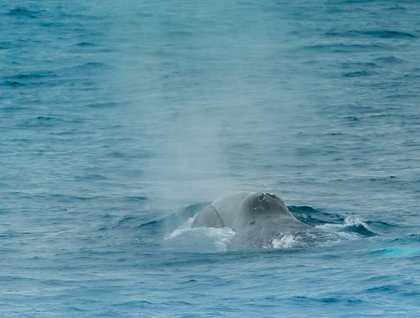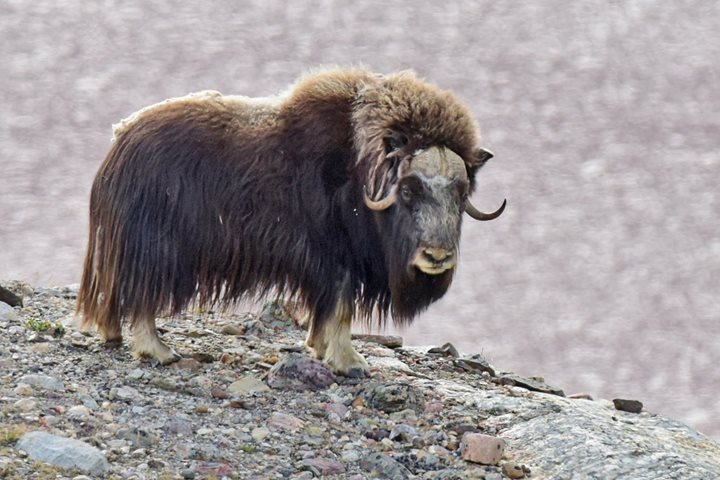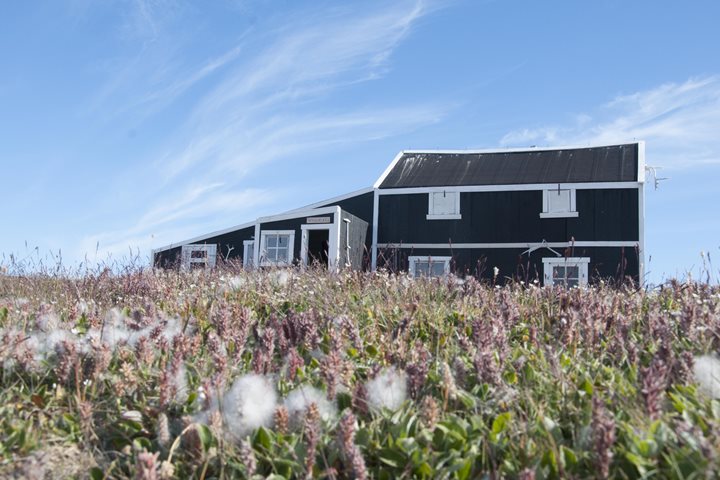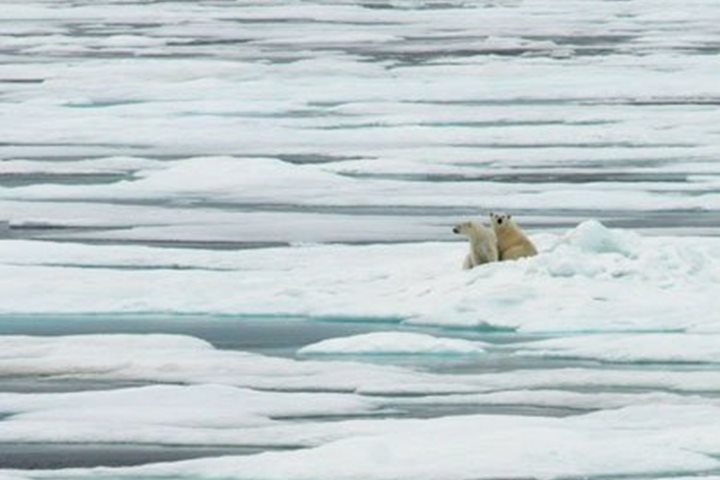Following the magical events of last night, we awoke with what can only be described as a polar bear hangover, one of the many symptoms of “polar fever,” an affliction you get after experiencing the ice. What is it that brings us to the far north, near the top of the world? Certainly the quest for the famed Northwest Passage is reason enough. But it’s the adventure of searching for Arctic wildlife that takes it over the top.
This morning National Geographic Explorer pushed north along the west coast of Baffin Island to Isabella Bay, a reported hotspot for wildlife. As the ship navigated slowly into Isabella Bay, its entrance guarded by a long sand bar, ahead of us appeared like a geyser field, bushy blows erupting one after another. The call came from the bridge – bowhead whales ahead!
For most of us on board this is our first sighting of this elusive species, named for its curved or bowed jaw. A true Arctic species, bowhead whales spend all of their time in the polar region, feeding on plankton blooms during the summer, and thus can only be seen by exploring the high Arctic. Perfectly adapted for the ice, bowheads can break through up to two feet of ice with it’s thick blubber layer, one of the reasons they were almost hunted to extinction by commercial whaling.
It was all hands on deck watching the whales when sharp eyes picked out a mother polar bear with two cubs resting near a snow bank on shore. Then, while watching the bears, walrus were spotted swimming in the shallows along the icy coast. Jackpot! Now in a single view, all three of the most emblematic Arctic species could be seen – polar bears, walrus, and bowhead whales.
After lunch National Geographic Explorer crossed above 70˚ north latitude where we encountered a massive tabular iceberg, called an “ice island” by the scientists who track them in this part of the world. We learn that this particular iceberg – called PII-2012-A-4 – broke off the Peterman Glacier in 2012 in northwest Greenland and now, two years later, is still six miles long and three miles wide. As the ship cruised along the edge of the ice for a closer look, a mother polar with two cubs was spotted walking along the highest part of the iceberg; a curious sight, since clearly there is no food for them there. Were they there to enjoy the view?
For the rest of the afternoon we pushed farther north through calm, glassy seas. And for those who lingered on deck after dinner, a green flash was witnessed (and photographed) as the sun slowly dipped below the Arctic horizon. A fitting end to another fabulous day!







